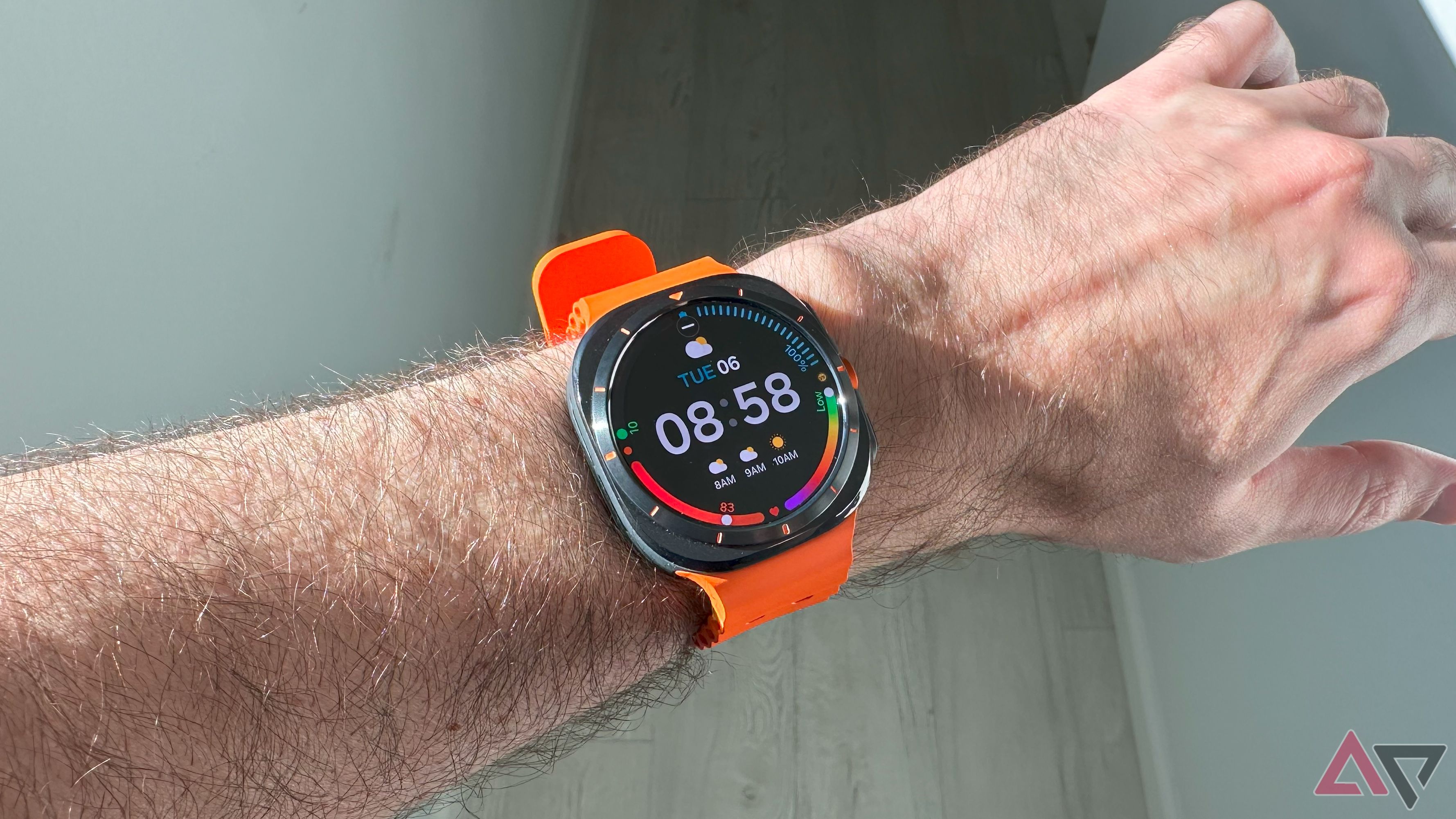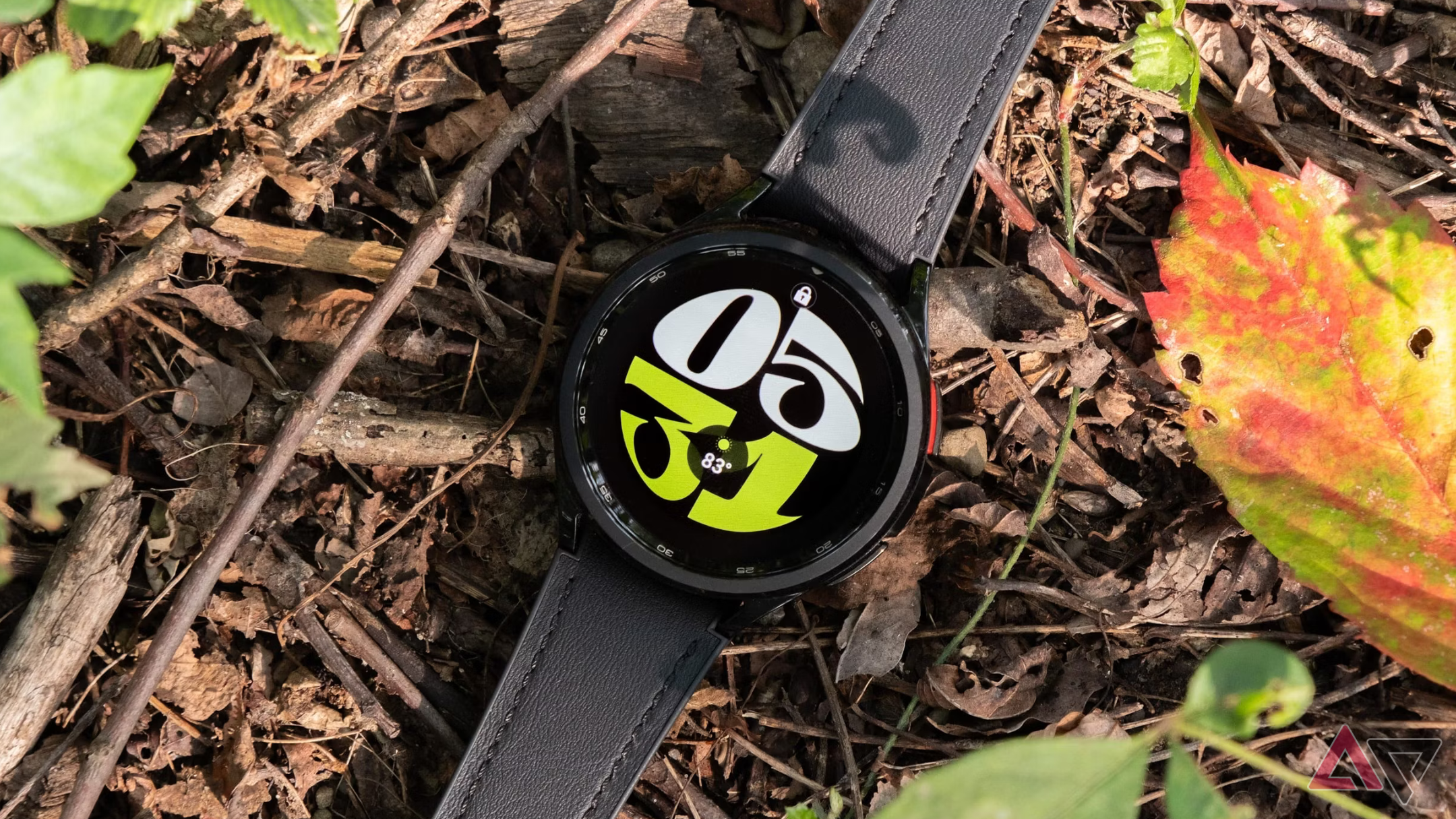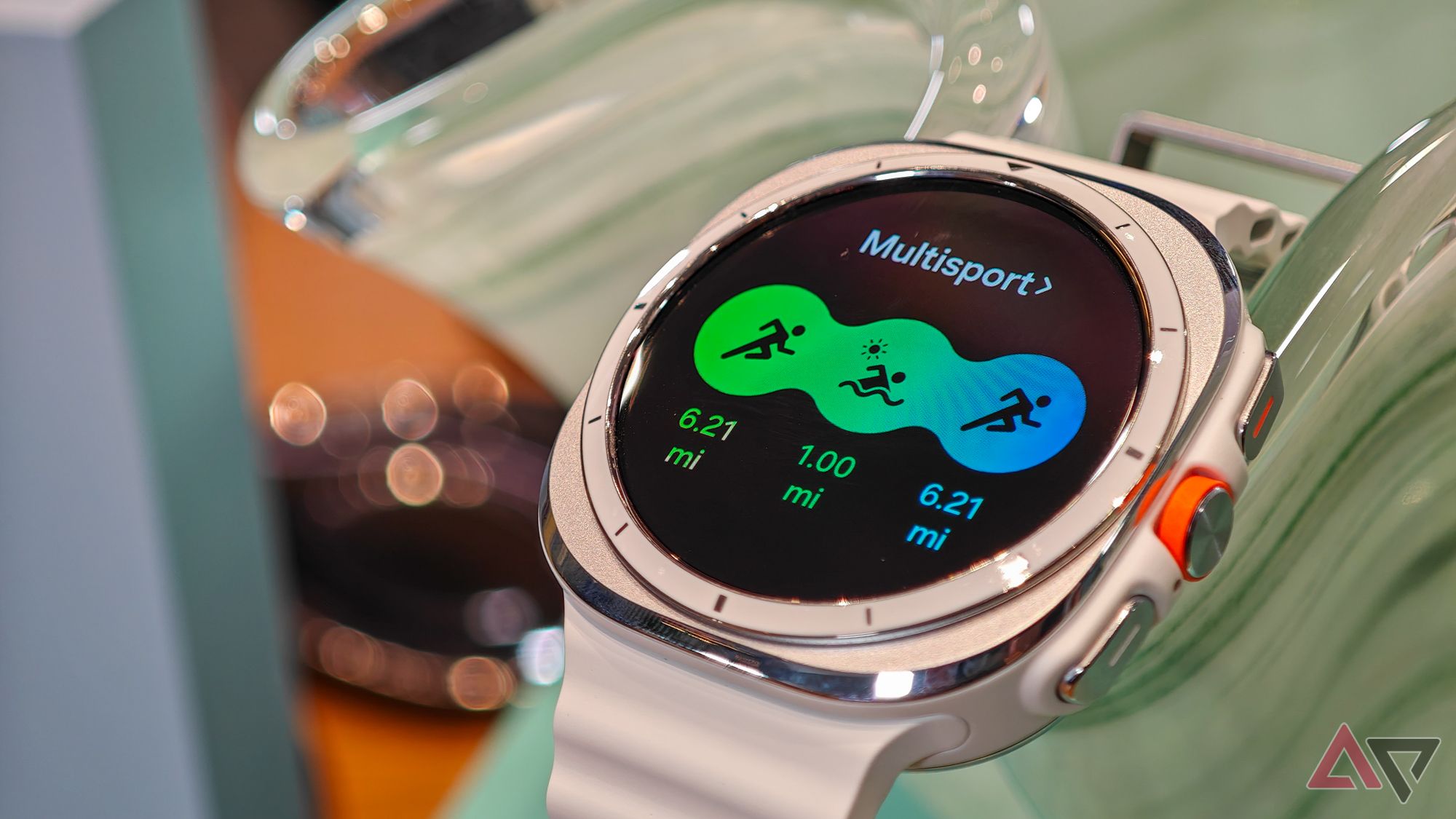-
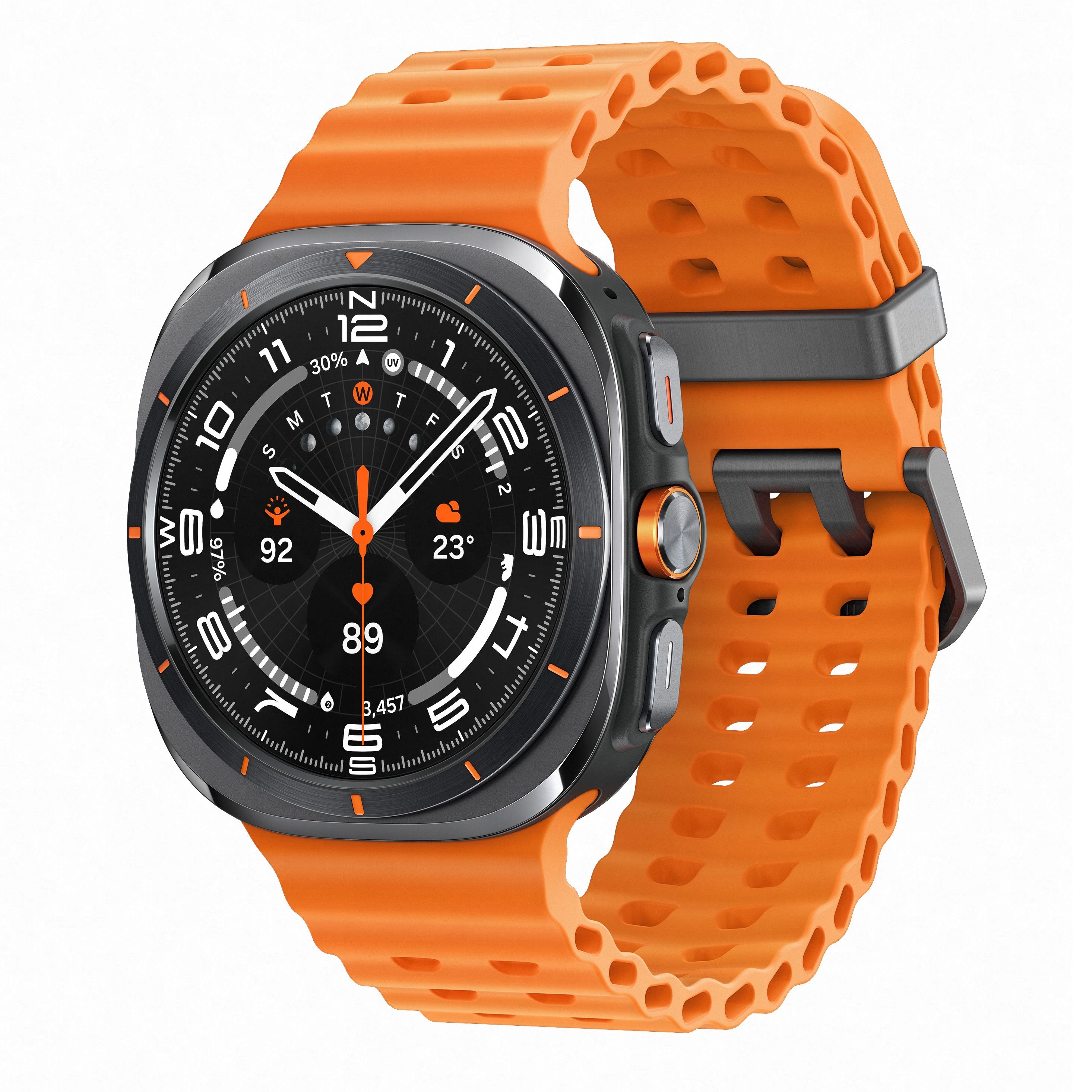
Samsung Galaxy Watch Ultra
Samsung’s toughest smartwatch
Part of Samsung’s 2024 smartwatch lineup, the Watch Ultra is the company’s most feature-rich smartwatch to date. It also has the new Exynos W1000 chip, a titanium casing, and LTE connectivity.
Pros- Rugged design
- Excellent performance
- Latest software
-
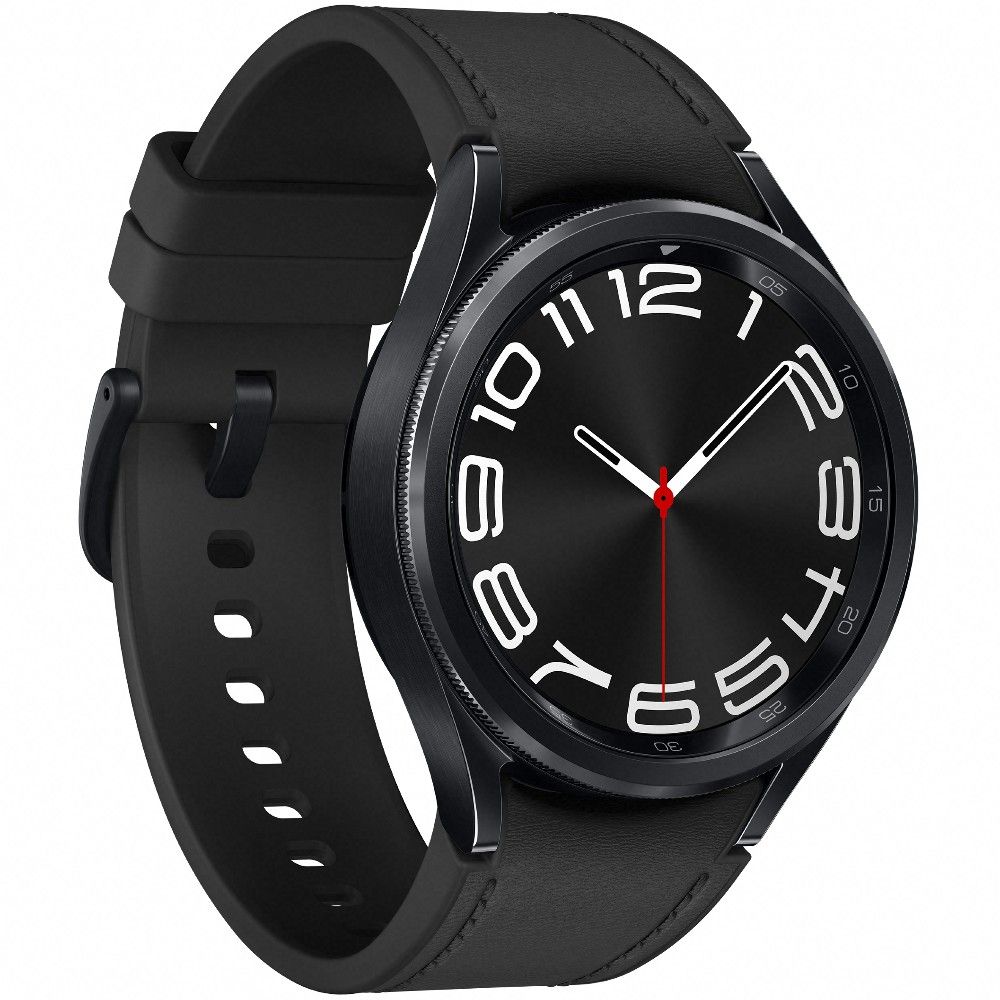
Samsung Galaxy Watch 6 Classic
Classic design
$310 $400 Save $90
Introduced in 2023, the Samsung Galaxy Watch 6 Classic is powered by an Exynos W930 processor. It features a stainless steel casing, optional LTE support, and a traditional watch-like design.
Pros- Classy design
- Good performance
- Physical rotating bezel
The Galaxy Watch Ultra is Samsung’s answer to the Apple Watch Ultra. It packs an impressive feature set in the most durable casing of any Galaxy Watch, houses a massive battery for a smartwatch, and has a beautiful AMOLED display.
But how does it stack up against the company’s 2023 model, the Galaxy Watch 6 Classic? As the name suggests, the Watch 6 Classic has a traditional timepiece design and comes with a physical rotating bezel, a much-loved feature that’s missing from the Ultra.
Price, availability, and specifications
The Galaxy Watch Ultra is Samsung’s most expensive smartwatch to date, priced at $650 for the lone 47mm version that features Wi-Fi and LTE connectivity. It can be bought from all major online and physical retailers, including the three major carriers.
The Watch 6 Classic, which has been around for over a year, has a list price of $400 for the 43mm variant with Wi-Fi, and $430 for the larger 47mm variant with Wi-Fi; the LTE model, in both sizes, is $50 more. However, the Watch 6 Classic is now frequently discounted and can be purchased starting at just $330. It’s also available from Samsung and most major retailers and carriers, at least for now.
Before we dive deeper, here’s a quick look at the raw specifications of the two smartwatches.
-
Samsung Galaxy Watch Ultra Samsung Galaxy Watch 6 Classic Case size 47 mm 43mm and 47mm Case Material Titanium Stainless Steel Display 1.5″ 480 x 480 AMOLED 43mm: 1.3-inch 432 x 432 Super AMOLED, Always On Display; 47mm 1.5-inch 480 x 480 Super AMOLED Always On Display CPU Samsung Exynos W1000 Exynos W930 Dual-Core 1.4GHz RAM 2 GB 2GB Storage 32 GB 16GB Battery 590 mAh 43mm: 300mAh 47mm: 425mAh Cellular connectivity LTE (optional) 5G (optional) Wi-Fi connectivity 2.4 GHz; 5 GHz Wi-Fi 5 Bluetooth 5.3 Bluetooth 5.3 Software One UI 6 Watch; Wear OS 5 Wear OS 4 / OneUi 5 Watch Health sensors Optical bio-signal; electrical heart signal; bioelectrical impedance; temperature Samsung BioActive Sensor, Temperature Sensor, Accelerometer, Barometer, Gyro Sensor, Geomagnetic Sensor, Light Sensor, 3D Hall Sensor Dimensions 47.4 x 47.4 x 12.1 mm 46.5 x 46.5 x 10.9 mm Weight 60.5 g 43mm: 52g 47mm: 59g IP Rating IP68 IP68 Colors Titanium Silver; Titanium Gray; Titanium White Black and Silver Price From $650 43mm: $400 47mm: $430
Design & display
The design is one of the most significant differentiating factors between the two smartwatches. While the Galaxy Watch 6 Classic, as mentioned earlier, has a traditional watch design, the Watch Ultra sports a rounded square casing with a circular watch face. However, while the Classic has a stainless steel casing, the Ultra has a more durable titanium casing.
Another durability advantage Ultra has over the Classic is better water resistance. While the Classic can handle being dunked in up to 50 meters of water depth, the Ultra can survive up to 100 meters.
Thanks to the Galaxy Watch 6’s availability in two sizes, there is a reasonable option in the 43mm variant that people with slender wrists can consider. However, as the Ultra only comes in the 47mm variant with additional padding on the sides, it feels bulkier and thicker in day-to-day usage. As a result, the sheer size of the smartwatch can be its Achilles’ heel for many people.
Moreover, the Watch 6 Classic features the beloved rotating bezel, which makes it easy to navigate the smartwatch. The Ultra, on the other hand, has a digital bezel that you can use by swiping around the edge. Neither of the two smartwatches has a rotating crown; instead, you get regular buttons that you can customize in Samsung’s Wearables app.
As you can expect from a Samsung smartwatch, the Watch 6 Classic and Ultra have beautiful displays, with the 43mm Watch 6 Classic sporting a 1.3-inch screen, while the 47mm Classic and the Ultra have 1.5-inch displays each. Both watches also feature Sapphire Crystal protection, a durable material that provides superior scratch resistance for the displays.
Finally, while the Classic can reach 2,000 nits brightness, the Ultra has a brighter 3,000 nits screen. In any case, both are bright enough for easy visibility in most conditions.
Performance and battery life
The Watch Ultra packs Samsung’s new Exynos W1000 chip, which is also present in the Galaxy Watch 7. It’s based on a 3nm manufacturing process and delivers snappy performance, so you won’t notice lag or sluggishness. And although the Classic has an older Exynos W930 chip, it’s also a capable performer that keeps the smartwatch responsive. However, the newer chip in the Ultra certainly makes the smartwatch more futureproof.
Battery life is also a strong point of the Ultra, as it packs one of the biggest batteries in any Samsung smartwatch, at 590mAh. Samsung claims 60 hours of battery backup without power-saving mode, which is pretty accurate. The Classic has a smaller 300mAh battery in the 43mm variant and a 425mAh battery in the 47mm version. The 47mm variant’s battery life is around two days, whereas the 43mm lasts just over a day.
In other highlights, the Ultra has cellular connectivity by default, dual-frequency GPS, double the storage of the Classic, and an 85db emergency alarm. The dual-frequency GPS certainly improves the smartwatch’s GPS accuracy, and it’s better than the single-frequency GPS offered by the Classic.
So, in terms of both performance and battery life, the Ultra has an edge over the Classic.
Software, health tracking, and more
The Watch Ultra is one of the first smartwatches to ship with Wear OS 5, complemented by One UI 6 Watch. The newer Wear OS version improves performance and battery efficiency, and supports more advanced running metrics. While the Wear OS 5 changes are mainly under the hood, the One UI 6 Watch brings Galaxy AI, enabling features like Energy Score, Wellness Tips, and running race partner mode.
While you get Wear OS 4 with One UI Watch 5 on the Galaxy Watch 6 Classic, it’ll get the Wear OS 5 update in the future, though it’s unclear exactly when the update will arrive. Otherwise, as both smartwatches come from Samsung, the software experience is largely the same.
In terms of health and fitness tracking, the company has included a new BioActive sensor with an updated optical heart-rate sensor in the Watch Ultra, which promises more accurate heart-rate monitoring. It’s also the first smartwatch to include FDA-approved sleep apnea detection.
Besides, the Ultra offers sleep tracking, blood-oxygen monitoring, heart-rate monitoring, body composition measurements, cycle tracking, and fall detection, all of which are also available on the Watch 6 Classic. Both devices can also automatically detect workouts and track them. However, some features like triathlon/multisport workout mode are limited to the Ultra for now.
Which should you buy?
It’s a tricky decision between the Ultra and the Classic. Of course, the Watch Ultra is Samsung’s most feature-rich smartwatch and arguably the best Wear OS smartwatch with an impressive battery life; it’s also relatively niche and expensive.
If you’re the outdoorsy type or want the absolute best and aren’t perturbed by a bulkier design, the Galaxy Watch Ultra is an excellent option. It has a beautiful display, the latest software, and new features like sleep apnea detection and triathlon mode that you won’t find in the Classic.

Editor’s pick
Samsung Galaxy Watch Ultra
Rugged design, feature-rich
The Galaxy Watch Ultra is undoubtedly Samsung’s best smartwatch to date. It packs a ton of features, including a gorgeous display, a big battery, and a durable titanium casing.
However, if you want a more affordable smartwatch with a traditional and classy watch design and rotating physical bezel, the Galaxy Watch 6 Classic is a great alternative. Despite featuring an older processor, it delivers snappy performance, and offers almost the same software experience as the Ultra.
If you already own the Classic and are considering upgrading to the Ultra, the gap between the smartwatches isn’t very big right now. You get some new features, a faster chip, and more durability in the Ultra, but there’s nothing that screams for an immediate upgrade. You’re likely better off waiting for the next-generation Watch Ultra.

Runner-up
Samsung Galaxy Watch 6 Classic
Beautiful design, good performance
$310 $400 Save $90
The Galaxy Watch 6 Classic continues to be a good option in 2024 with its classy design, good performance, and refined software experience.
Source link

